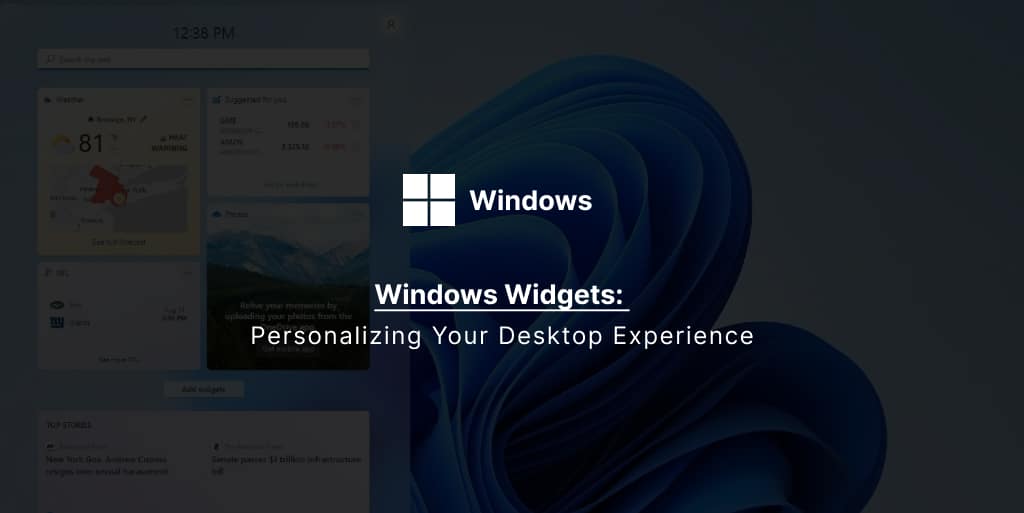Introduction to Desktop Customization
The desktop environment on your PC isn’t just a static workspace; it’s a digital canvas waiting for your personal touch. Windows widgets are instrumental in this transformation, offering a blend of utility and aesthetic pleasure. But what are widgets, and how do they revolutionize our interaction with our desktops?
What are Windows Widgets?
Widgets are mini-applications that provide quick access to information and functionalities without the need to open a full-fledged app. They’ve been part of the Windows ecosystem for a while, each iteration increasing their integration and importance.
The Evolution of Widgets in Windows
From the sidebar in Windows Vista to their modern incarnation in Windows 10 and 11, widgets have come a long way. Their evolution reflects Microsoft’s understanding of user needs for quick, at-a-glance information.
How Widgets Enhance User Experience
Widgets aren’t just for show; they have practical benefits that affect how we interact with our PCs daily.
The Convenience Factor
Instant access to information like weather updates, news headlines, and calendar events streamline your daily digital interactions, proving that widgets can be as practical as they are pleasing to the eye.
Personalization and Productivity
By customizing which widgets you use and how you use them, you can create a more productive workflow that aligns with your individual needs and preferences.
Types of Widgets Available
The variety of widgets is vast, and choosing the right ones can be akin to picking the best tools for a job.
Default Windows Widgets
Microsoft offers a suite of built-in widgets designed to integrate seamlessly with the Windows operating system and your digital life.
Third-Party Widgets
Beyond the default options, third-party widgets can fill almost any niche, offering tailored functionalities that Microsoft’s offerings might not cover.
Customizing Your Widget Display
Tailoring your widget display is key to a personalized and functional desktop environment.
Adding Widgets to Your Desktop
Learn the steps to add widgets and how to customize their appearance for an optimized desktop experience.
Organizing Your Widgets for Maximum Efficiency
Strategic placement and organization can make your widgets not just handy, but also a natural part of your desktop workflow.
Widgets and System Performance
Widgets are convenient, but they shouldn’t come at the cost of performance. Managing their impact is crucial.
Managing Widget Impact on System Resources
Understanding how widgets affect your system’s resources can help you strike a balance between functionality and efficiency.
Choosing Resource-Friendly Widgets
Select widgets that offer the best functionality without overburdening your system’s performance.
Security and Privacy Concerns
In the digital age, any addition to your system must be scrutinized for security and privacy implications.
Ensuring Widget Security
Stay safe by evaluating the security of the widgets you choose to install.
Privacy Settings for Widgets
Learn how to manage your widgets’ access to your data and ensure your privacy is not compromised.
Future of Widgets in Windows
The trajectory of widgets in Windows suggests an exciting future.
Innovations on the Horizon
Anticipate what Microsoft might bring to the table in terms of new widget functionalities and integration.
Integrating Widgets with Other Microsoft Services
The potential for widgets to work in tandem with other Microsoft services could redefine our desktop experience.
Conclusion
Widgets may seem like small tools, but their impact on personalization and productivity is significant. They symbolize a future where our desktops are not just part of our work environment but a personalized digital hub.

